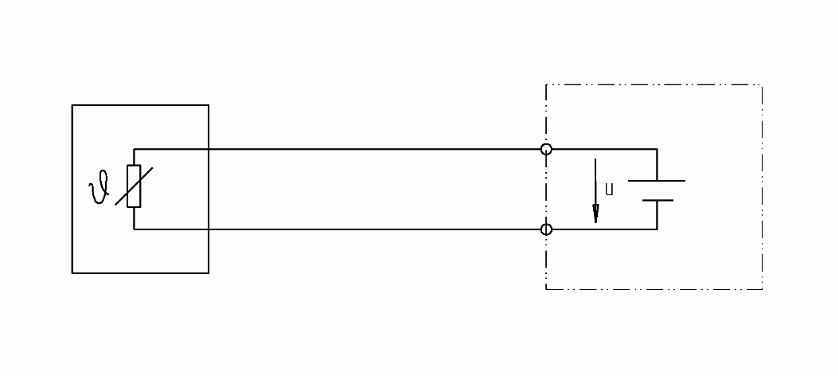
Pt100, Pt1000 and NTC are the most-used measuring elements in resistance thermometers. I would like to use this blog to consider the question of connection types in greater detail.
Resistance thermometers change their electrical resistance as a function of temperature. This physical effect makes it possible to measure the temperature of a process with a Pt100. The resistance is determined by electronics (e.g. temperature transmitter) by using a constant current and measuring the voltage drop. According to Ohm’s law (R = U/I), the resistance [R] and voltage [U] are proportional to each other at a constant current [I]. There are three possible ways to connect the Pt100 to the transmitter: in a 2-, 3- or 4-wire connection.
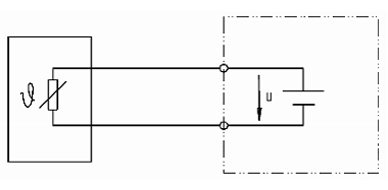
Fig.: Pt100 in 2-wire connection
Pt100 in 2-wire connection
With a 2-wire connection, the resistance of the cable is added as an error in the measurement. For a copper cable with a cross-section of 0.22 mm2, the following guide value applies: 0.162 Ω/m → 0.42 °C/m for Pt100. For a version with Pt1000 the influence of the supply line (at 0.04 °C/m) is smaller by a factor of 10 in relation to the basic resistance. The lead resistance becomes still less significant in relation to the basic resistance R25 with an NTC measuring element (e.g. R25 = 10k). Due to the sloping characteristic curve of the NTC, the influence at higher temperatures increases disproportionately.
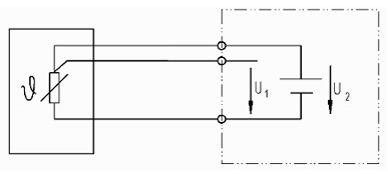
Fig.: Pt100 in 3-wire connection
Pt100 in 3-wire connection
The influence of the lead resistance is compensated to the greatest possible extent with a 3-wire connection. The requirement for this is that the lead resistances are the same, as can be assumed with a 3-wire connection. The maximum length of the connection lead depends on the conductor cross-section and the compensation options of the evaluation electronics (transmitter, display, controller or process control system).
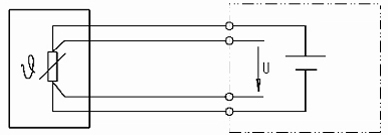
Fig.: Pt100 in 4-wire connection
Pt100 in 4-wire connection
The 4-wire connection completely eliminates the influence of the connection lead on the measuring result since any possible asymmetries in the lead resistance of the connection lead are also compensated.
Alternative measures
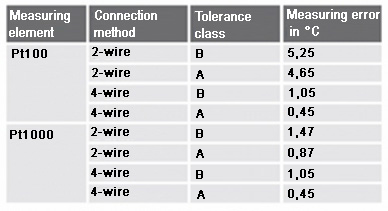
Example: Measuring error at 150 °C, cable length 10 m, conductor cross-section 0.22 mm2
A further possibility to substantially decrease the influence of the cabling is to increase the conductor cross-section. With a cross-section of 0.5 mm2 the line resistance is only 0.036 Ω/m or 0.1 °C/m. Both options (3/4-wire connection or increasing the cross-section) lead to a higher cost in the cabling, which can be problematic, especially in cost-sensitive markets such as machine building. As a compromise between cost and accuracy, for smaller cable lengths, a class A, 2-wire connection Pt1000 measuring element can be offered.
Conclusion
- The highest measurement accuracies are only achievable with a Pt100 in a 4-wire connection.
- A Pt1000 measuring element in class A also offers good measurement accuracies in a 2-wire connection and represents an economical alternative to 3- or 4-wire connections for machine building.
Note
Further information on resistance thermometers can be found on our website.
Please also watch the following video to learn more about the differences between a Pt100 and a Pt1000 resistance sensor:

